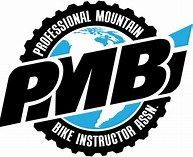How To Ride Wet Trails
How To Ride Wet Trails

There is a lot of important details to pay attention to when riding wet trails. Keep reading for some great advice.
BRAKING AND LINE CHOICE
One of the most important factors when tackling wet trails is your choice of braking points. Over-braking, dragging brakes, and simply braking in the wrong place are traits all too easy to get sucked into.
As with all your riding you should be looking well down the trail to spot features and make your line choice, not staring down on the front wheel. A common issue people have with root riding is carrying too much speed on the simple stuff before barrelling into the roots, panicking, stamping on the brakes, and jarring up both bike and body which then syphons away the remnants of any traction.
It's time to take a step back before moving forward. If you can (and your climate permits), it's worth locating and dissecting a stretch of slick track that you have trouble with. Slow down when entering technical sections, do your braking ahead of time, and try to keep the bike 'active' – suspension designs vary in their efficiency, which can cause the bike to 'jar' and lose grip, as well as a dragged brake giving a root an open invitation to pull your wheel out from under you.Slowing down your entry and picking your way through the rough stuff to find traction in the smooth is a risky game that can't always be avoided, but try to limit it to a minimum by slowing down your entry and picking your way through the rough stuff to find traction in the smooth.
To avoid the worst of the holes and roots, dumping the main line and putting up high or even cutting low makes a lot of sense. This is a talent that can't be learned overnight and only comes with practice, but by stopping and dissecting parts and trying a few alternative lines, you'll begin to realize the advantages of going off the main highway and mastering how to ride wet trails.
BODY POSITION AND WEIGHT DISTRIBUTION
As the bike crosses over obstacles, adopting the 'attack stance' will provide you a lot of flexibility, room to move, and respond to the trail approaching you. If you're not sure what we're talking about, take a look at our blog titled "How to Master the Attack Position."
Low to the bars, with knees bent slightly and elbows unlocked, letting them to move back and forth as they absorb the trail's impacts. Maintain a central riding stance and avoid hanging out the back door or standing rigidly, as this will prevent you from reacting quickly enough to the bike slipping beneath you. It's a good idea to learn to let the bike move underneath you, with your response motions coming from your hips and legs while your upper body remains mostly fixed.
Learning where and when to weight the bike into the ground by pressing through the contact points and slightly lowering your heels is another technique to unlock grip or avoid a slide out. As a general rule, you should put your weight on the grippy things first, then lighten up on the slippery stuff to assist you glide over the surface.
TIRE CHOICE
Tires come in a confusing array of treads, sidewall casings, compounds, and widths. While tread design is a matter of personal preference based on your riding style and environment, you may still enhance traction at the expense of rolling speed by lowering your tire pressure. With a more dh-style tire casing, you may lower your pressures while still maintaining puncture resistance.
Most tires are also available in a range of compounds; softer compounds provide more grip but wear faster and roll slower, whereas hard compounds roll faster and last longer but provide less grip. Both are concessions, but if you lack confidence, a softer tire compound may be a worthwhile investment.
Confidence comes from practice and experience, so the next time you're cringing and holding on through a section of roots or sludge, it might be worth stopping and getting to grips with the areas that make you and your bike squirm.














